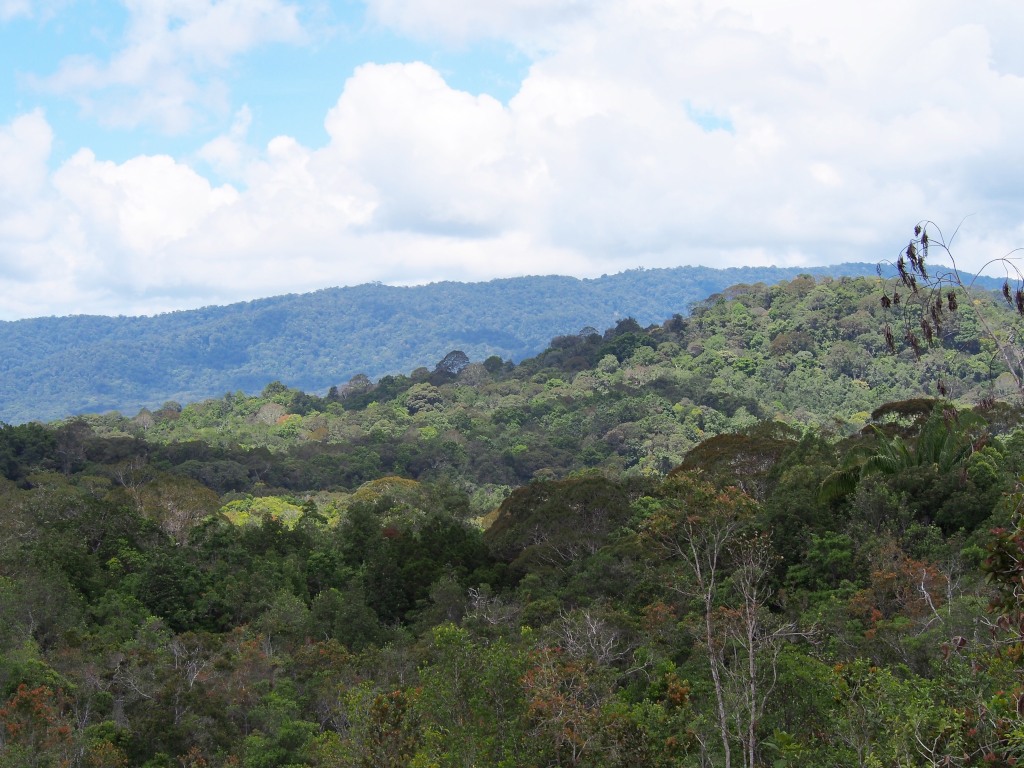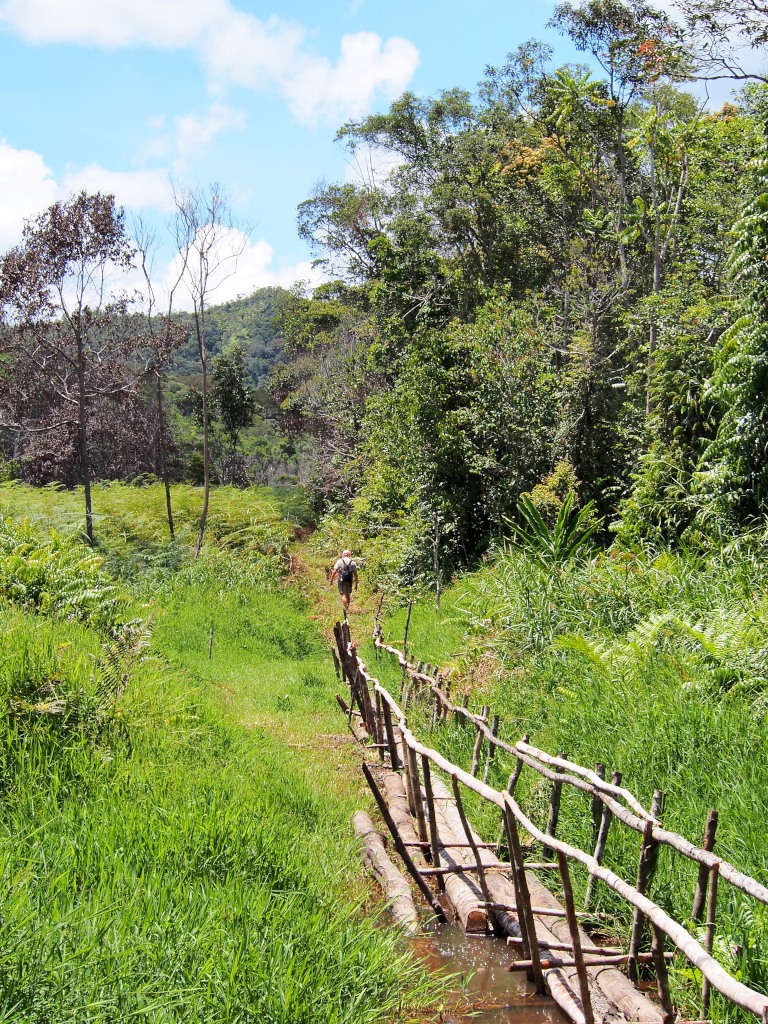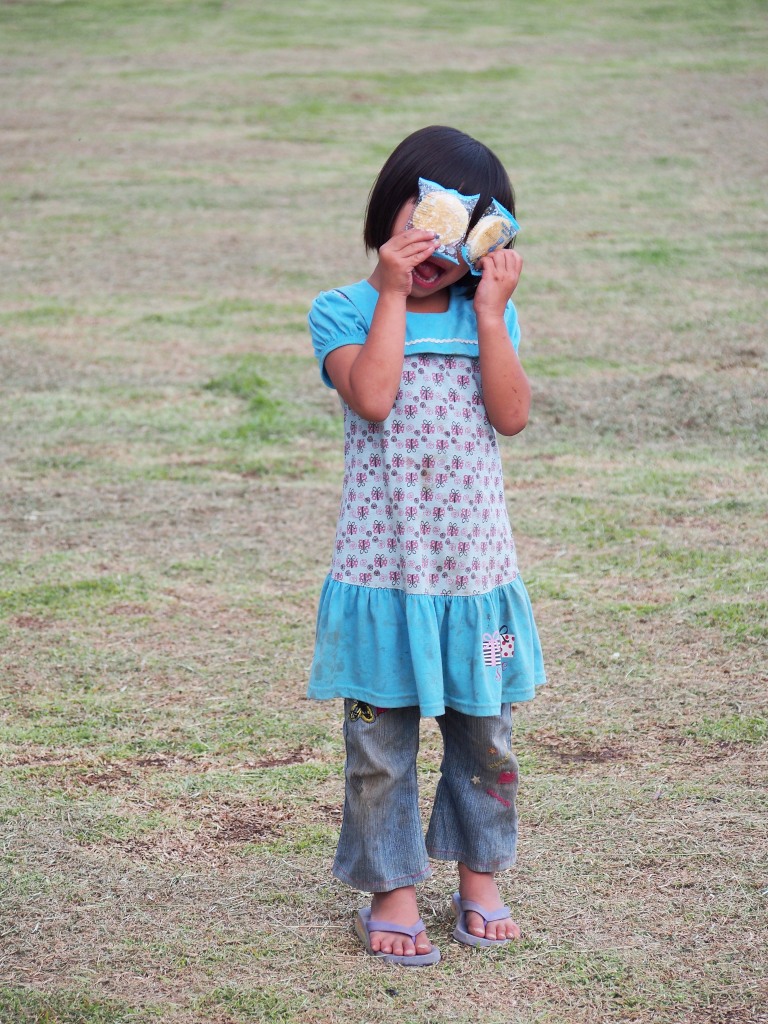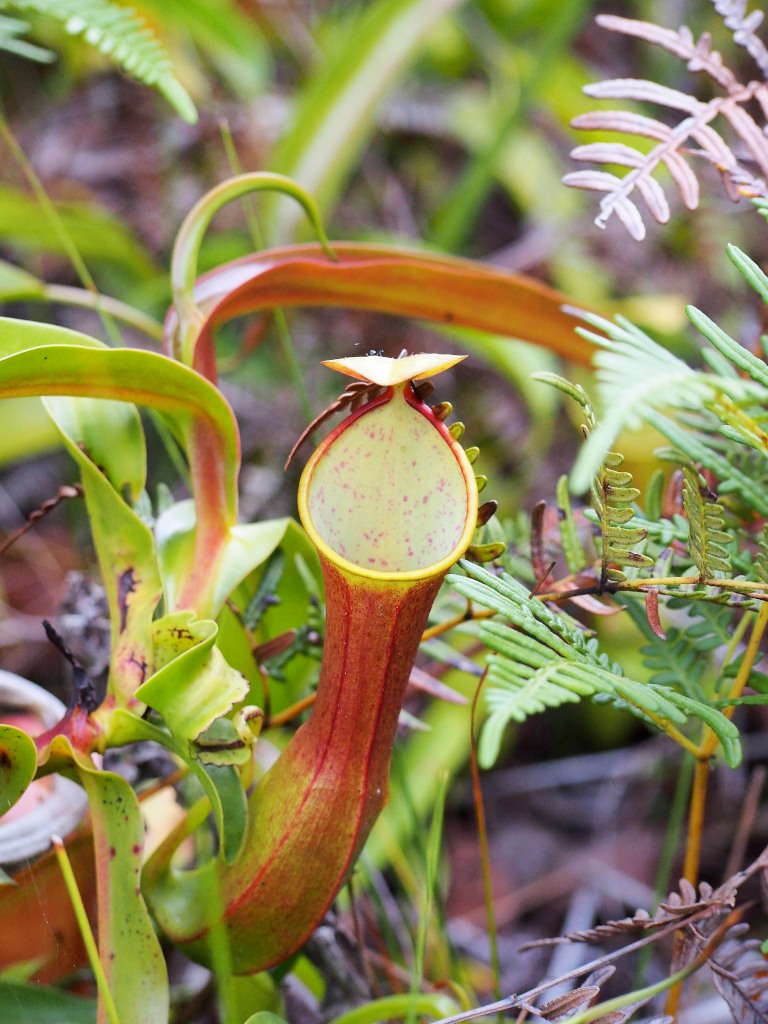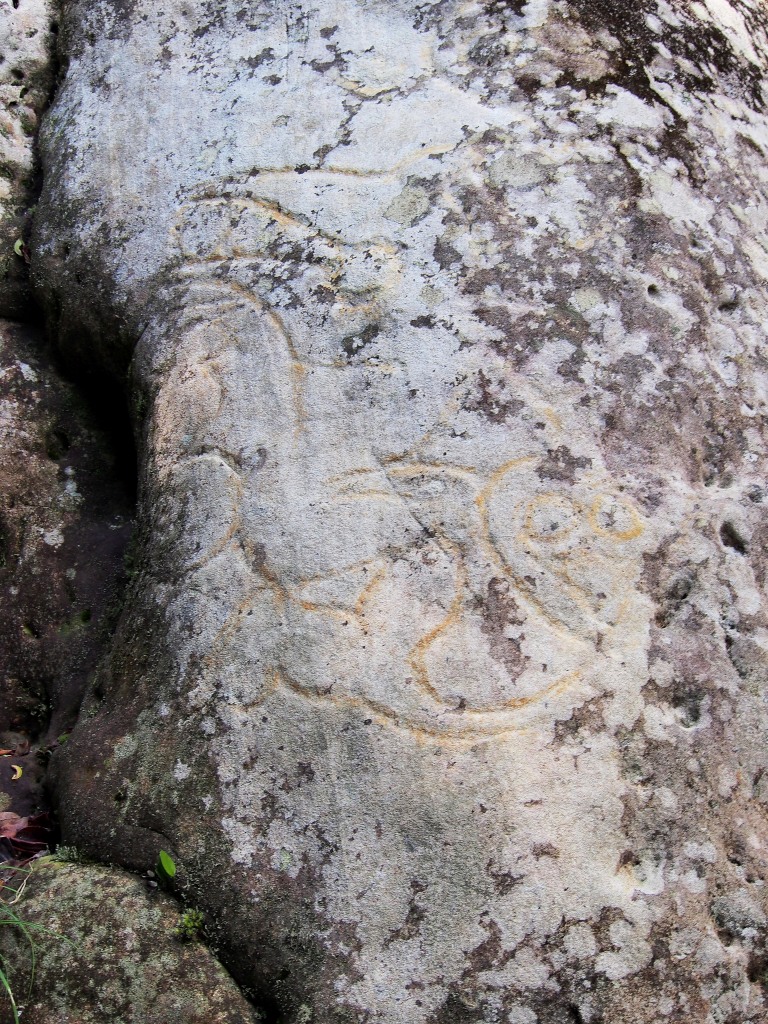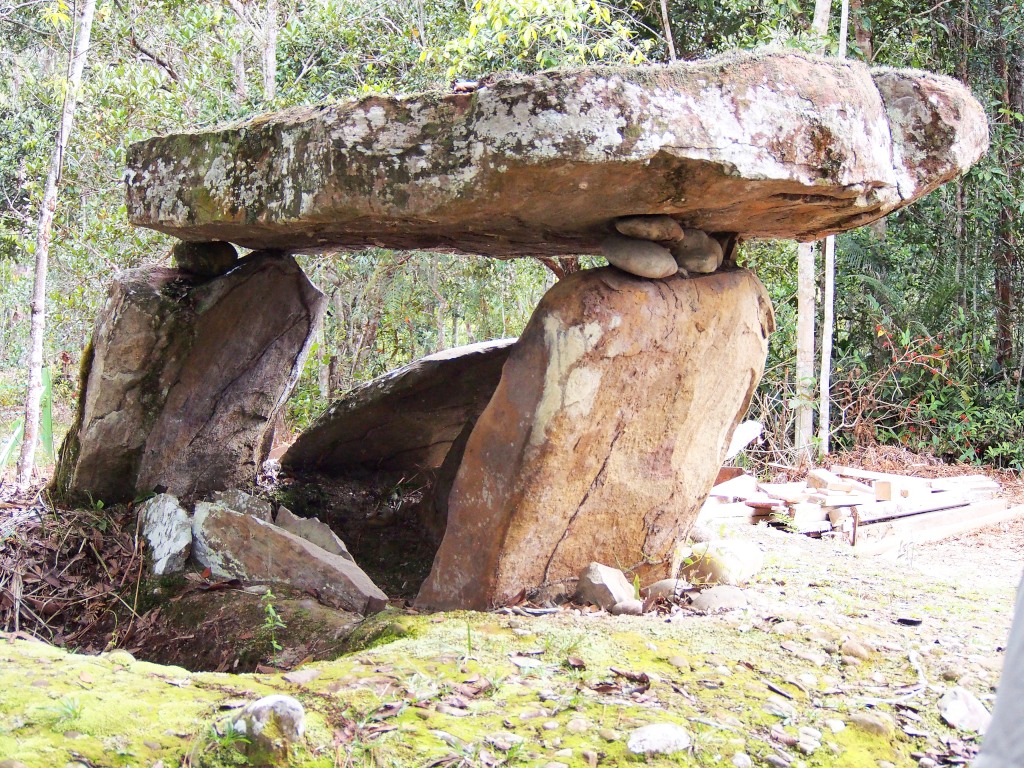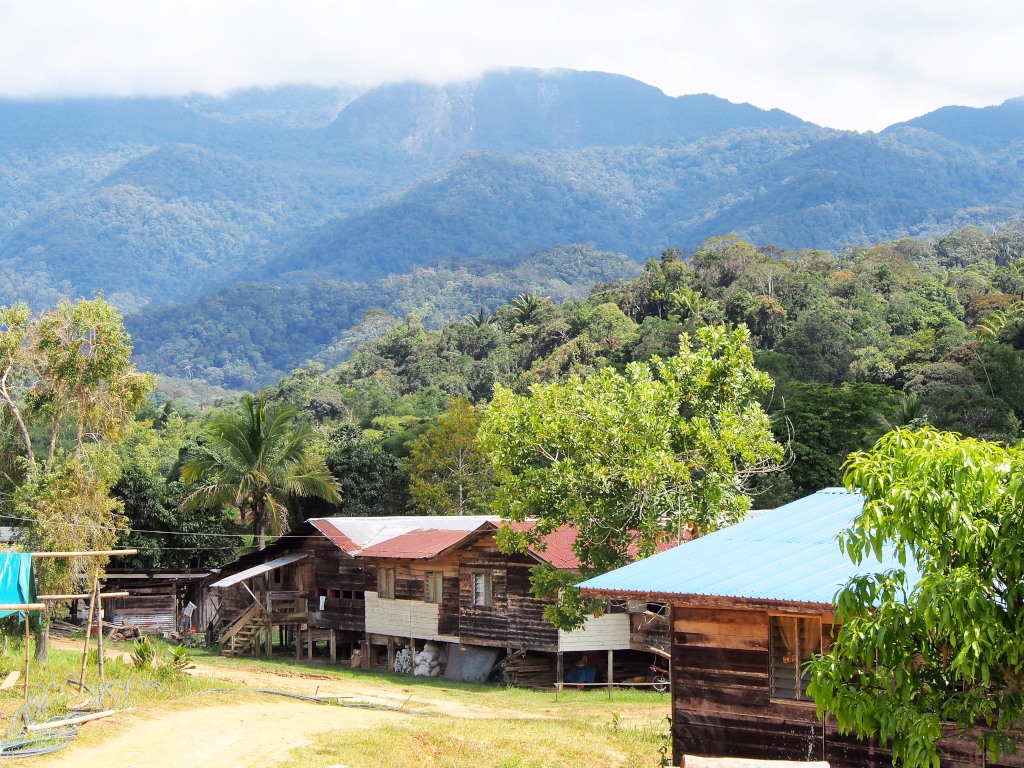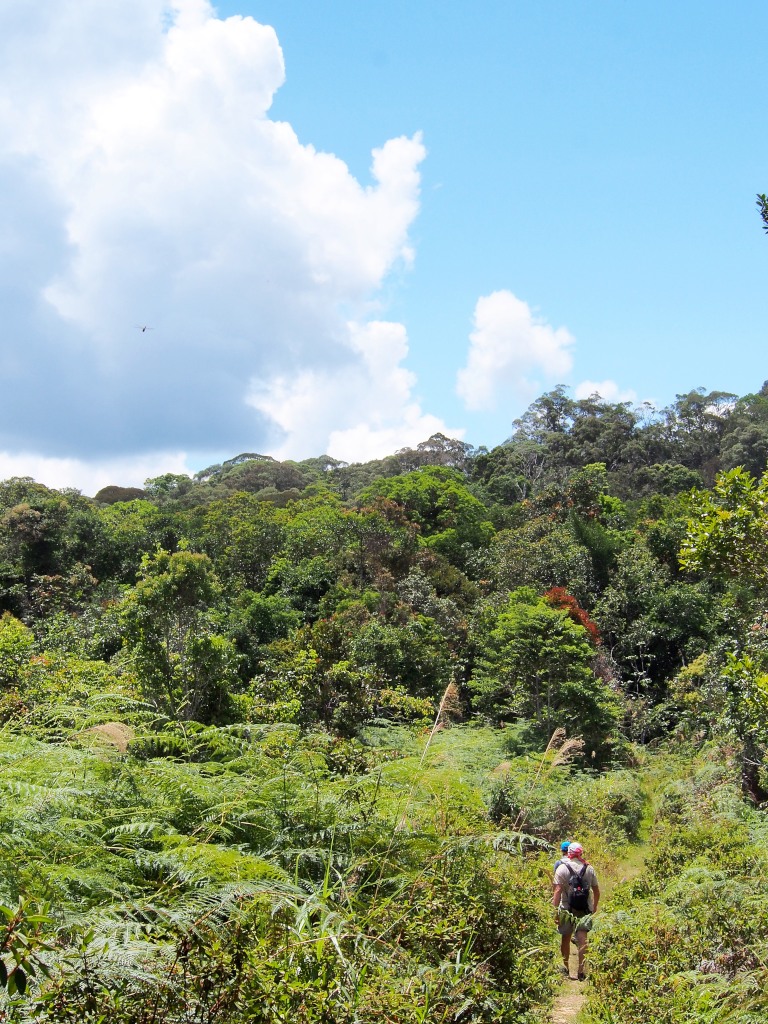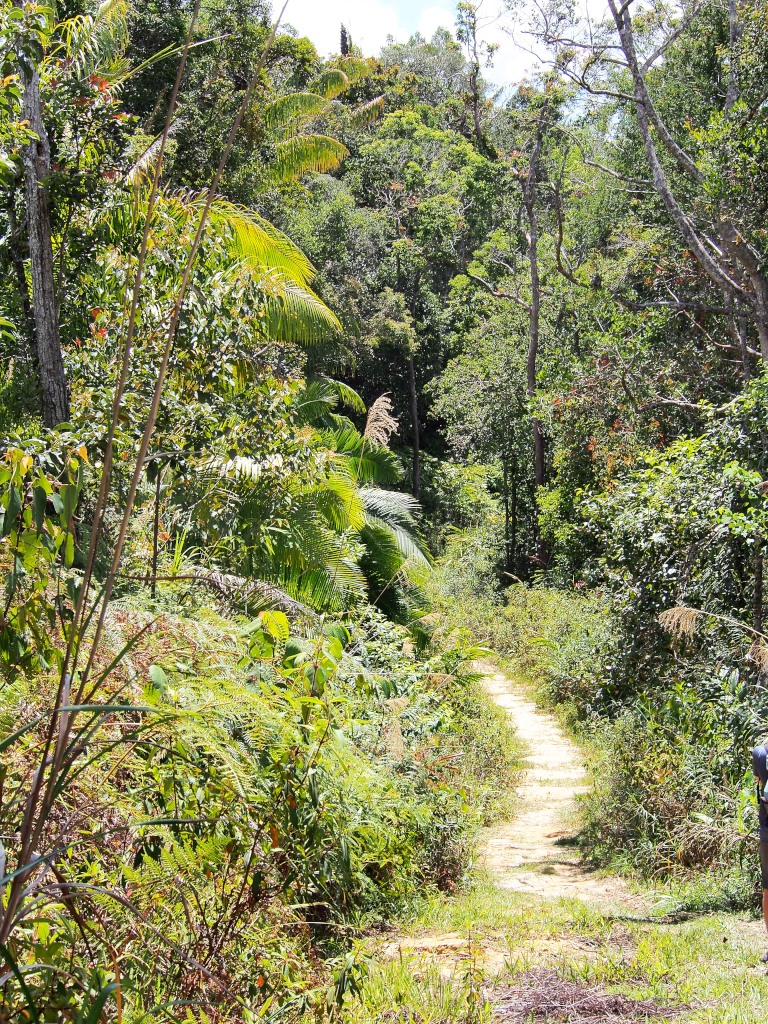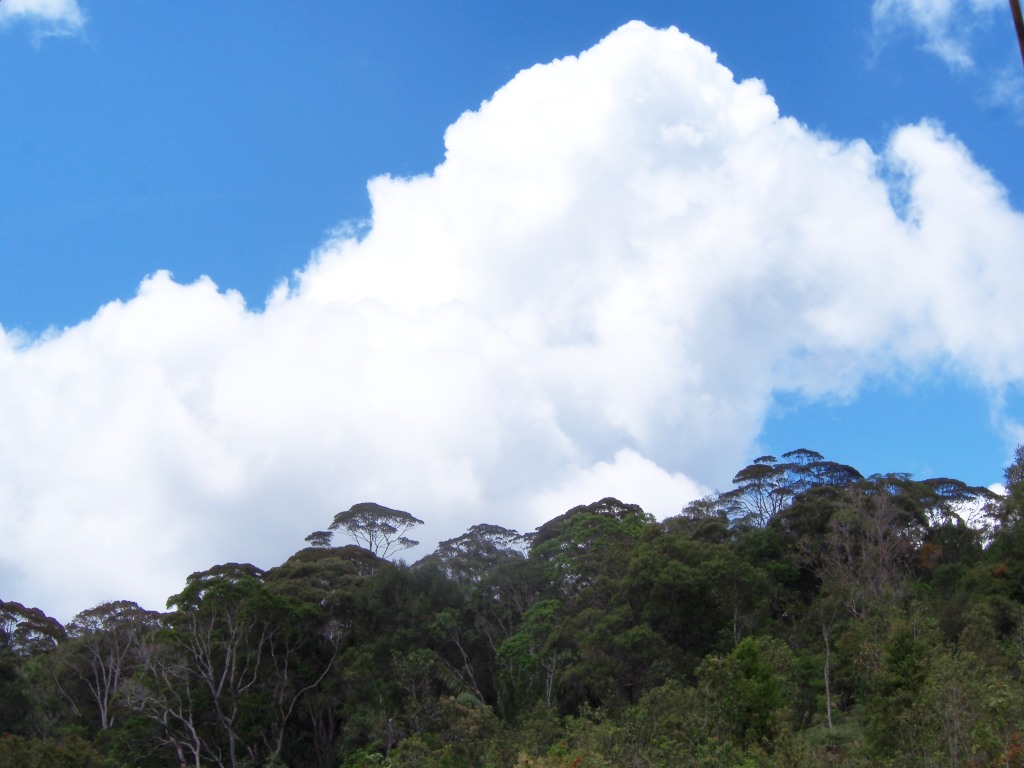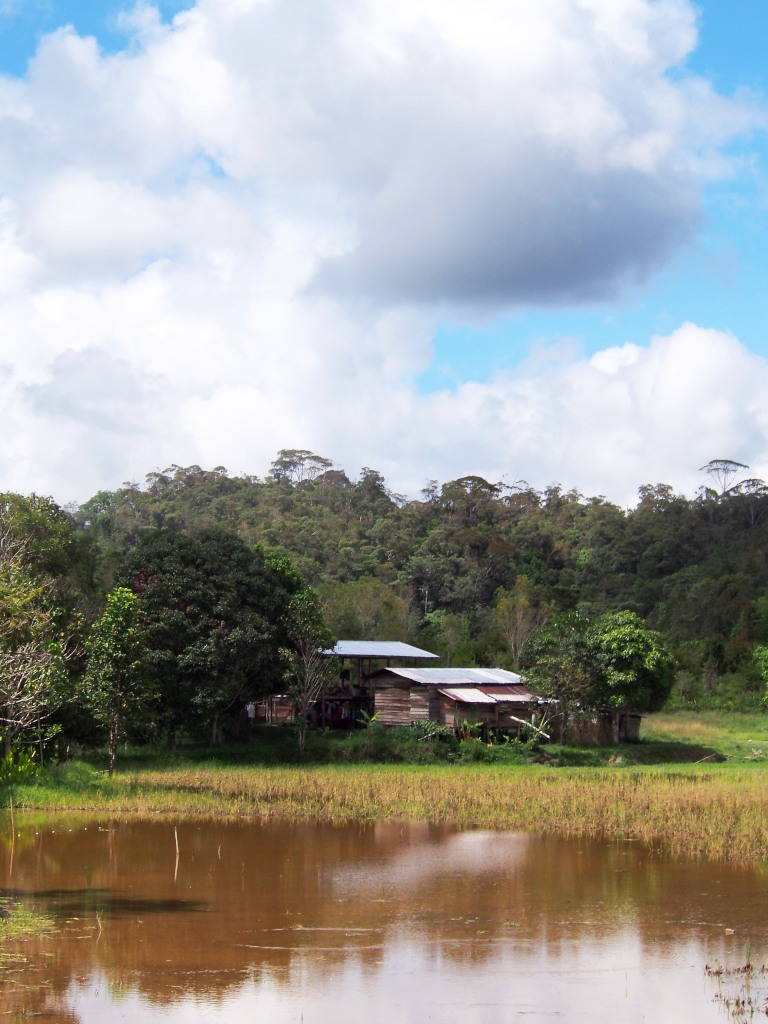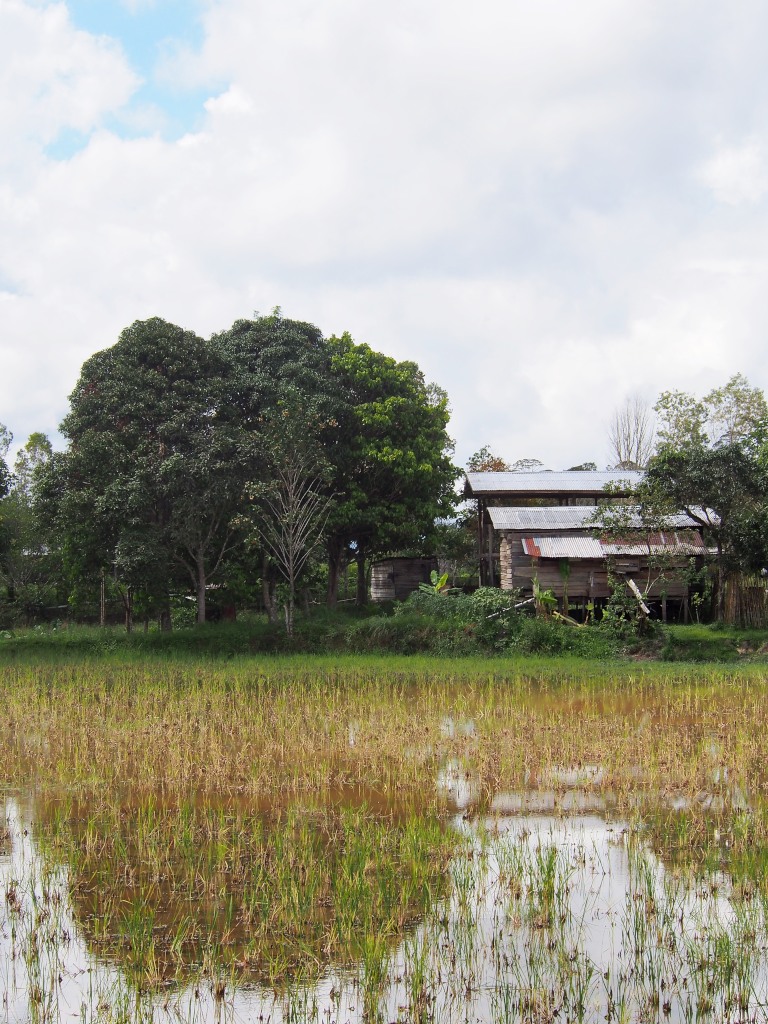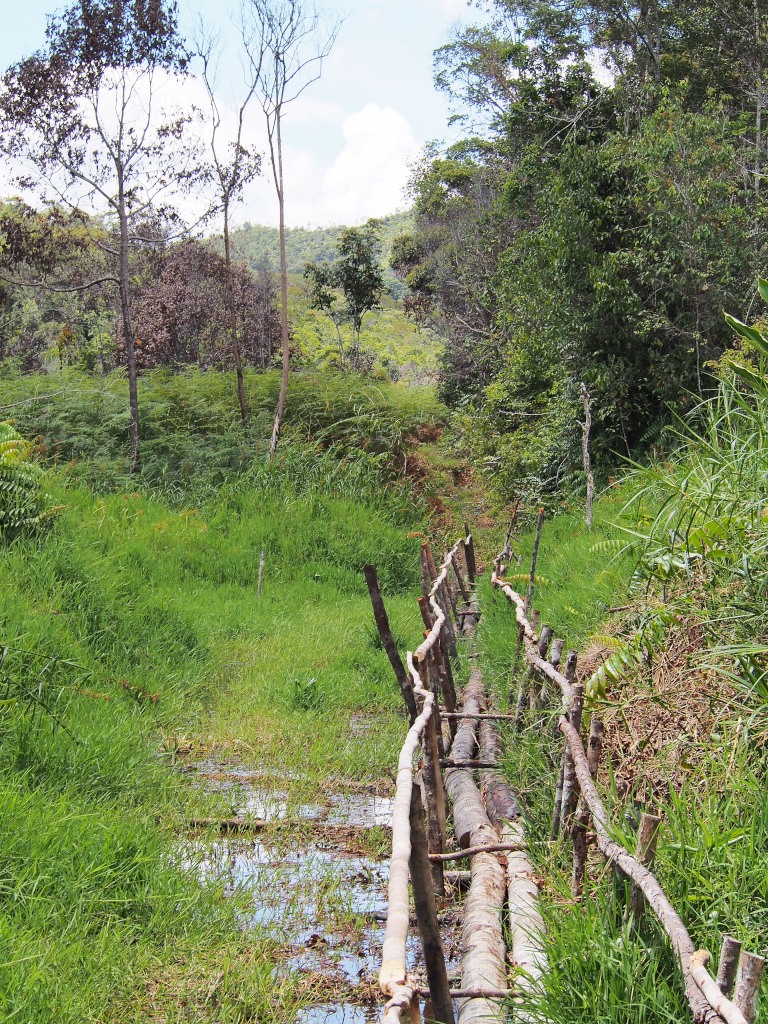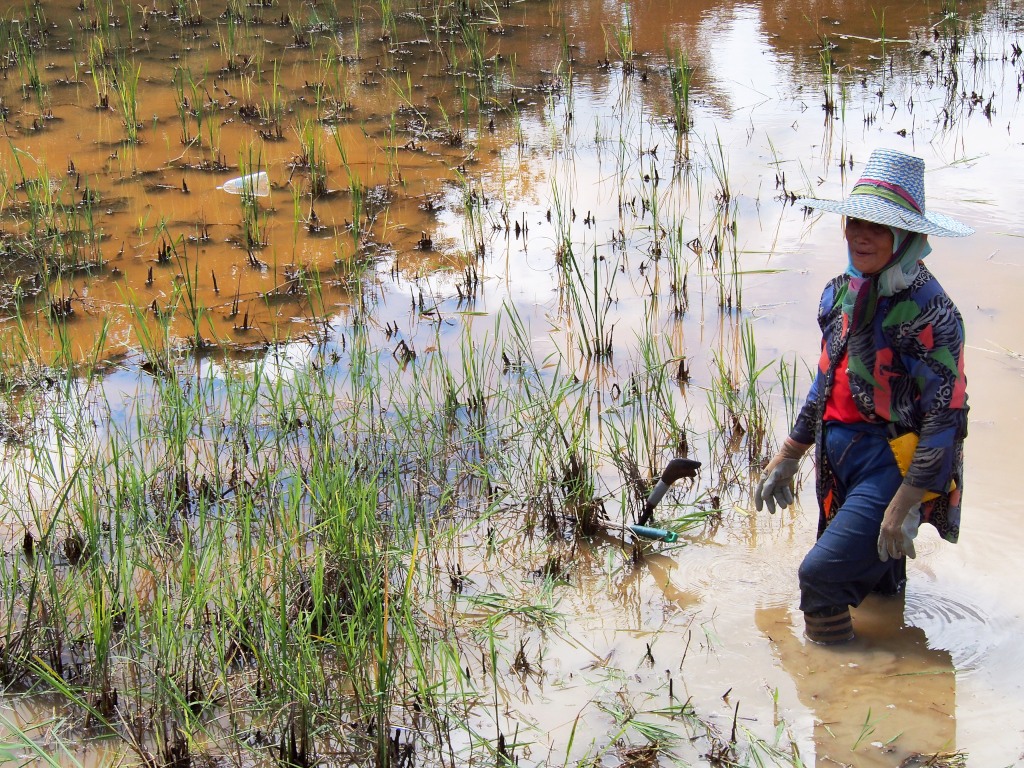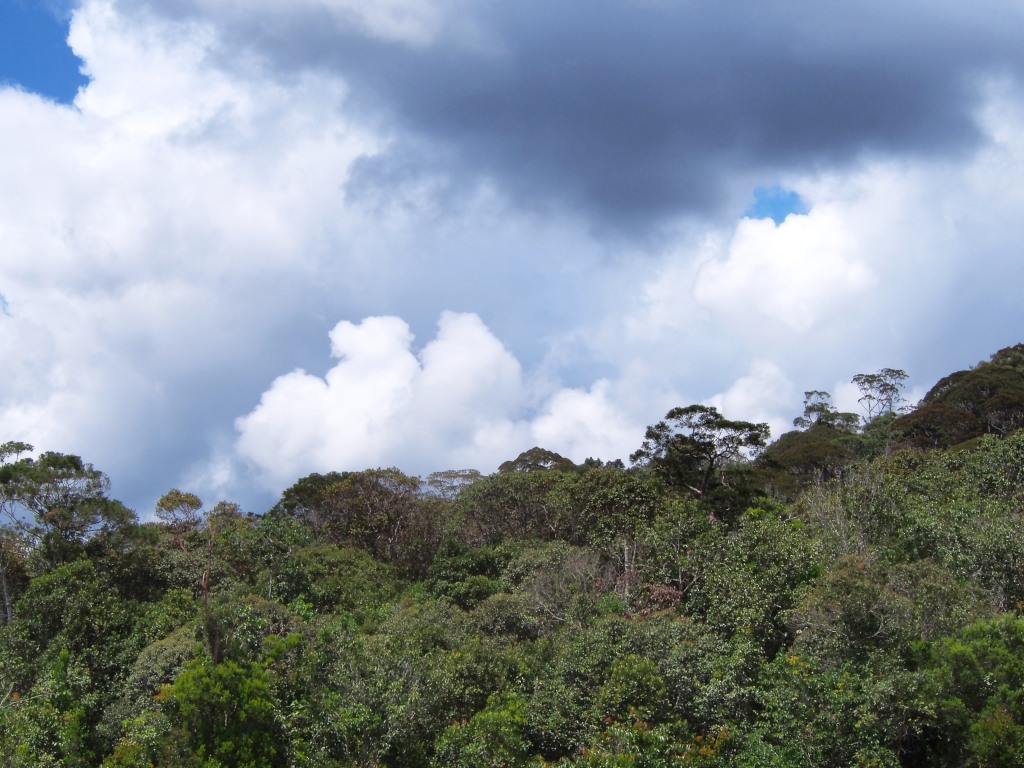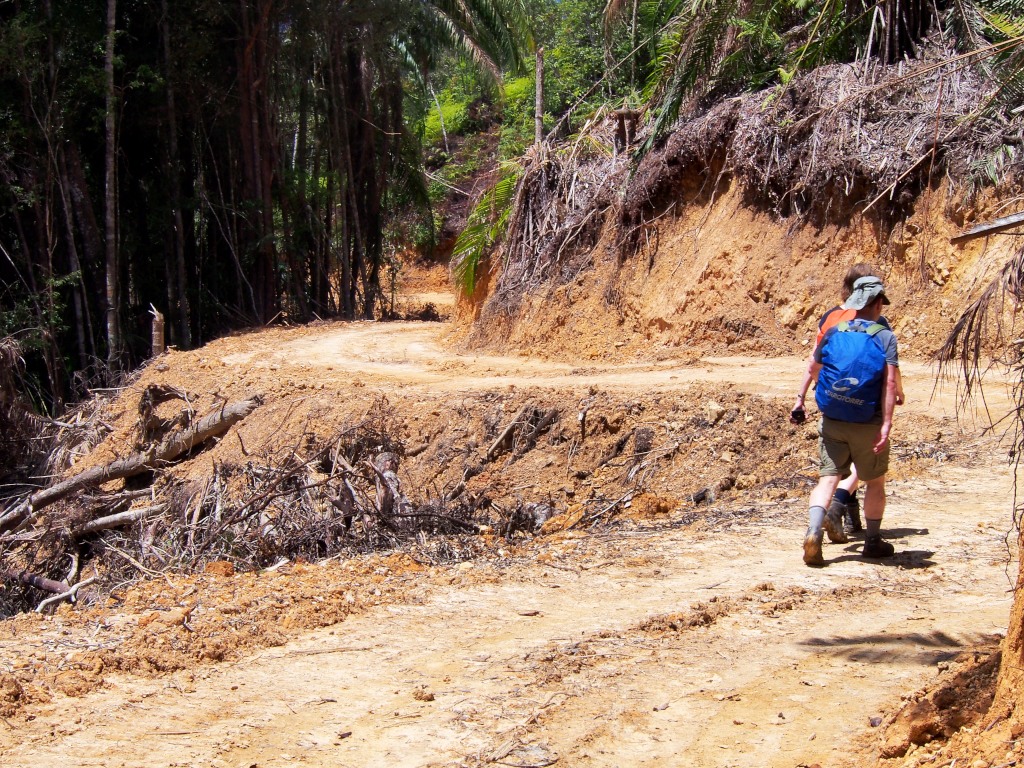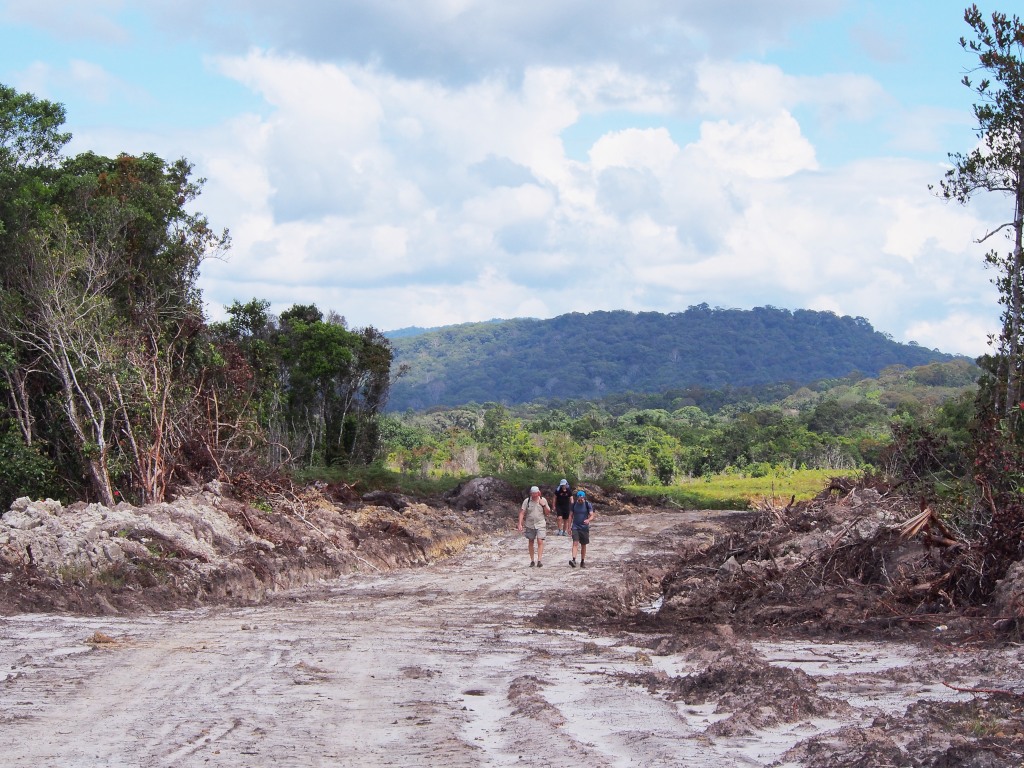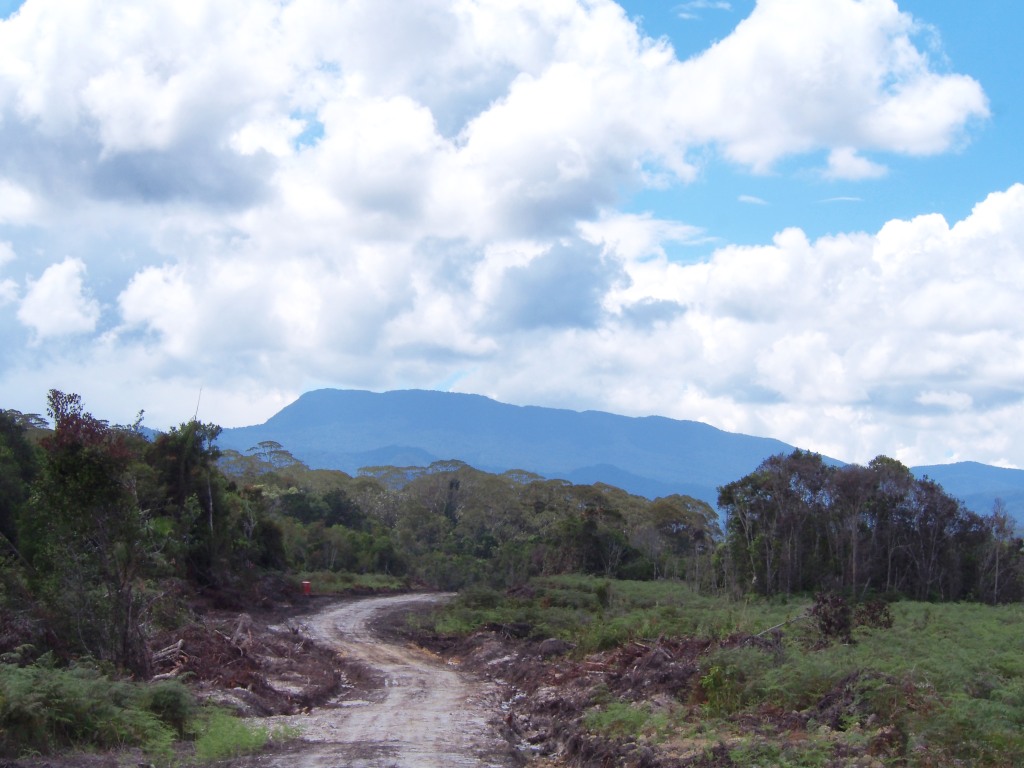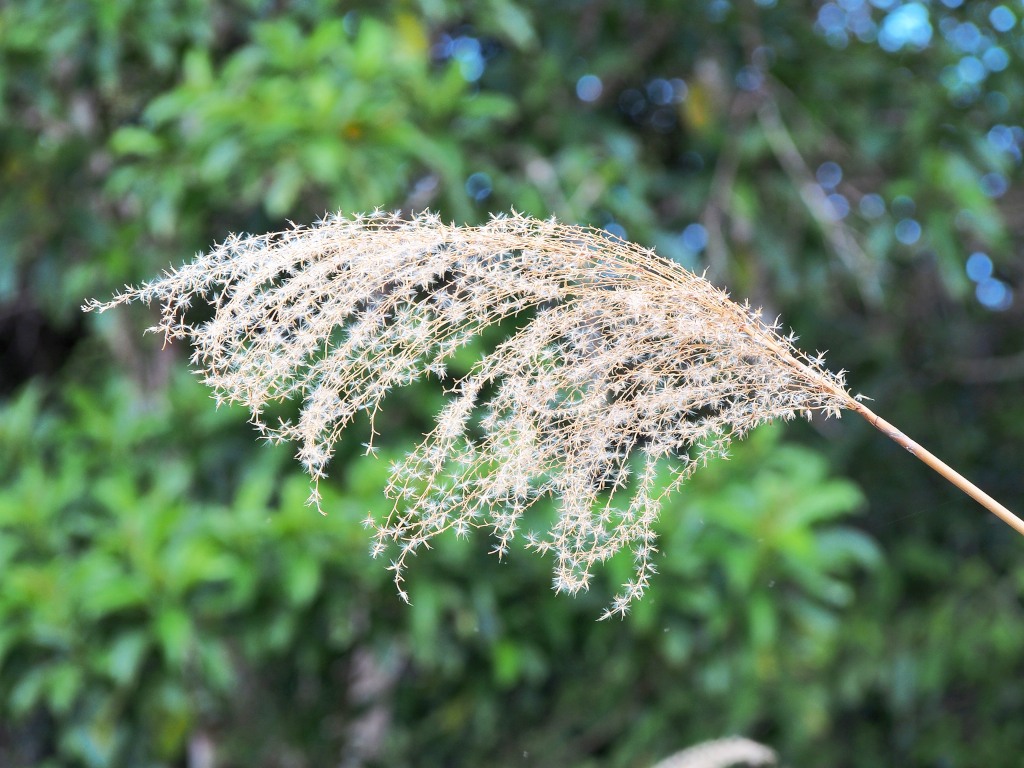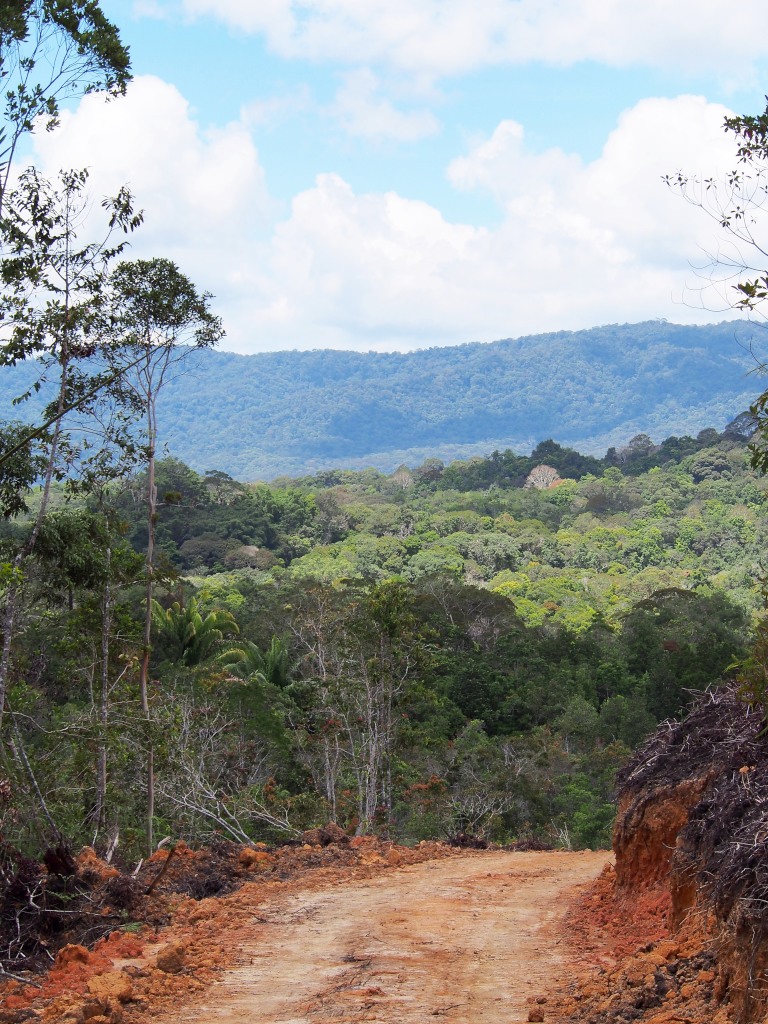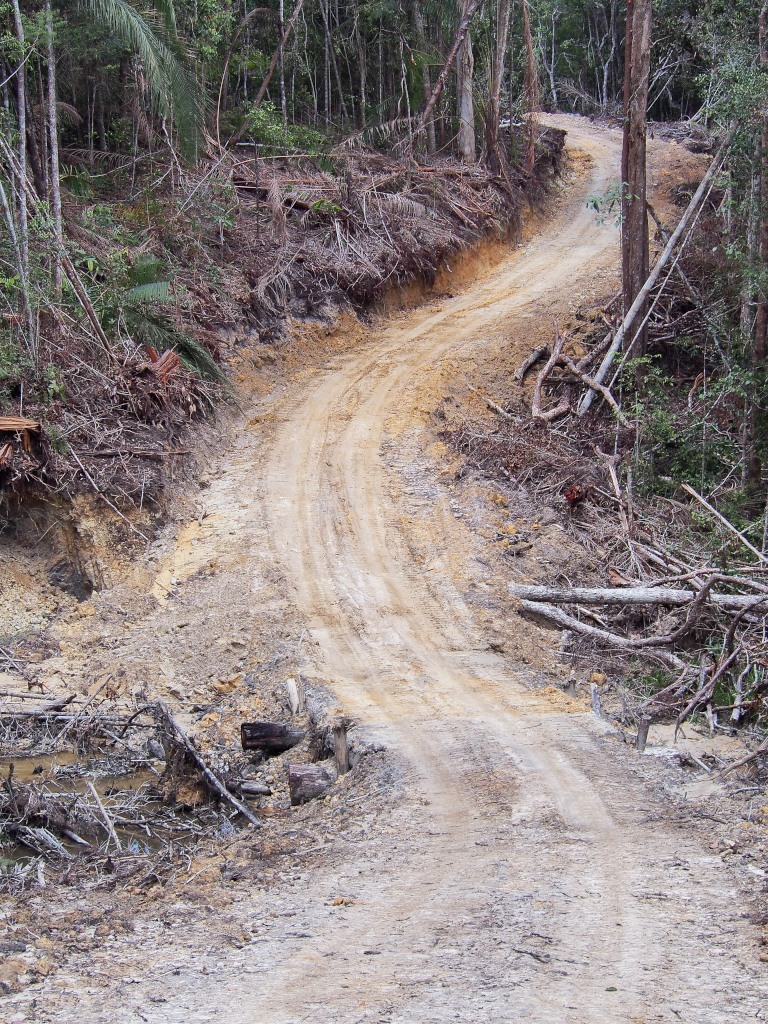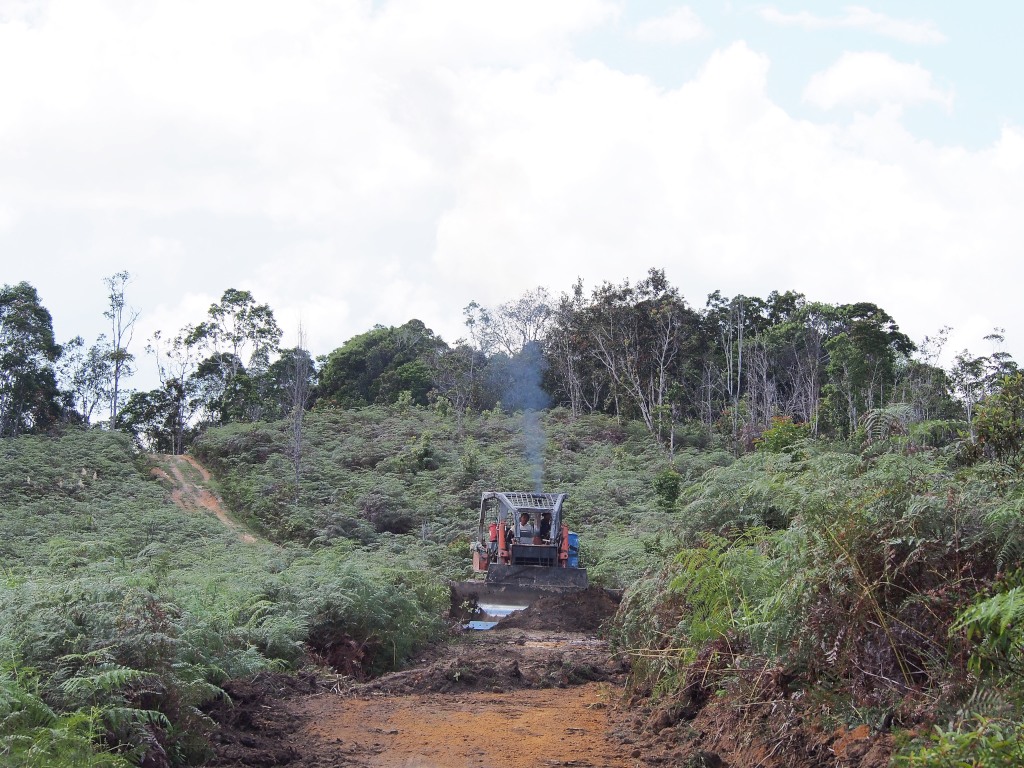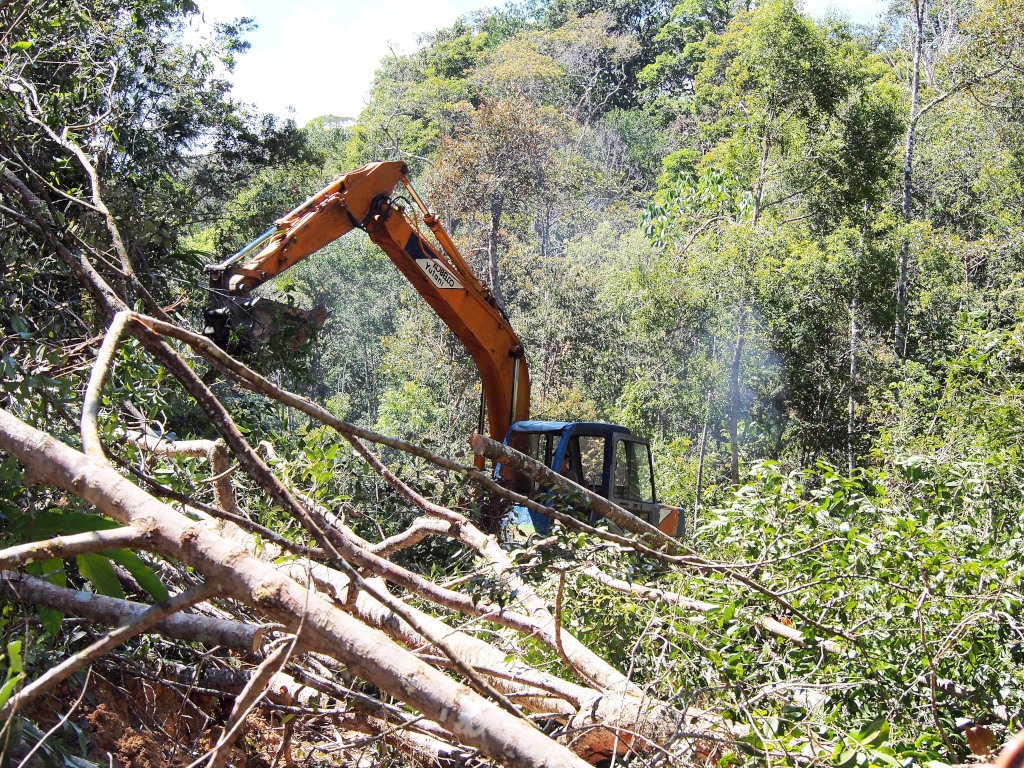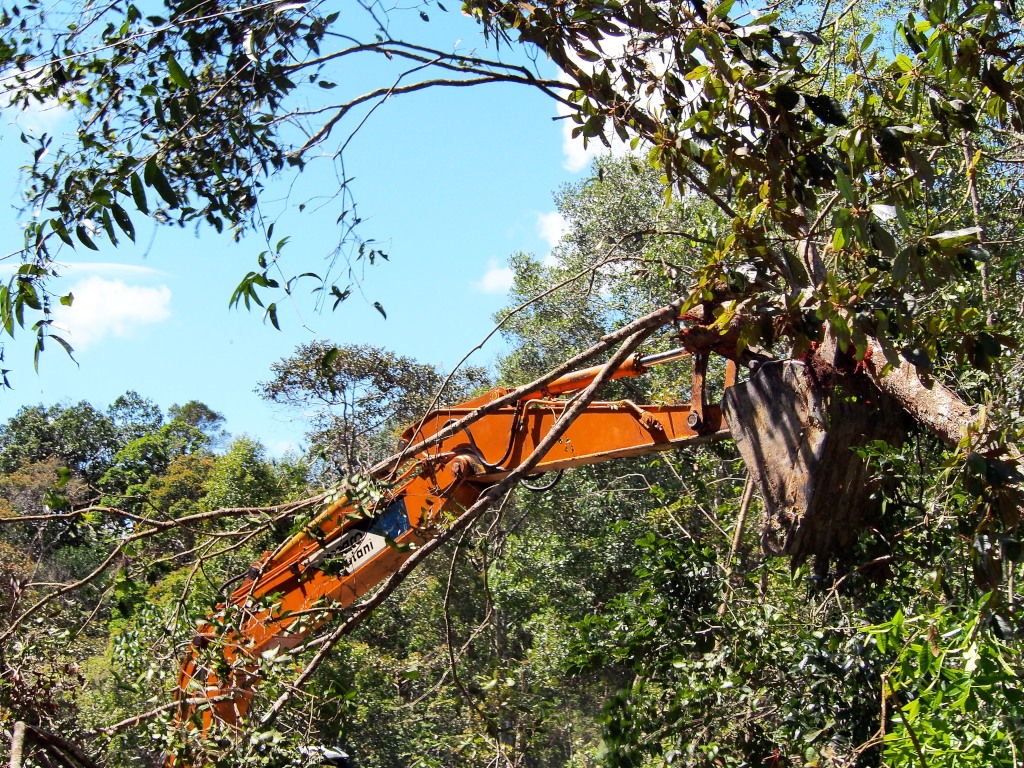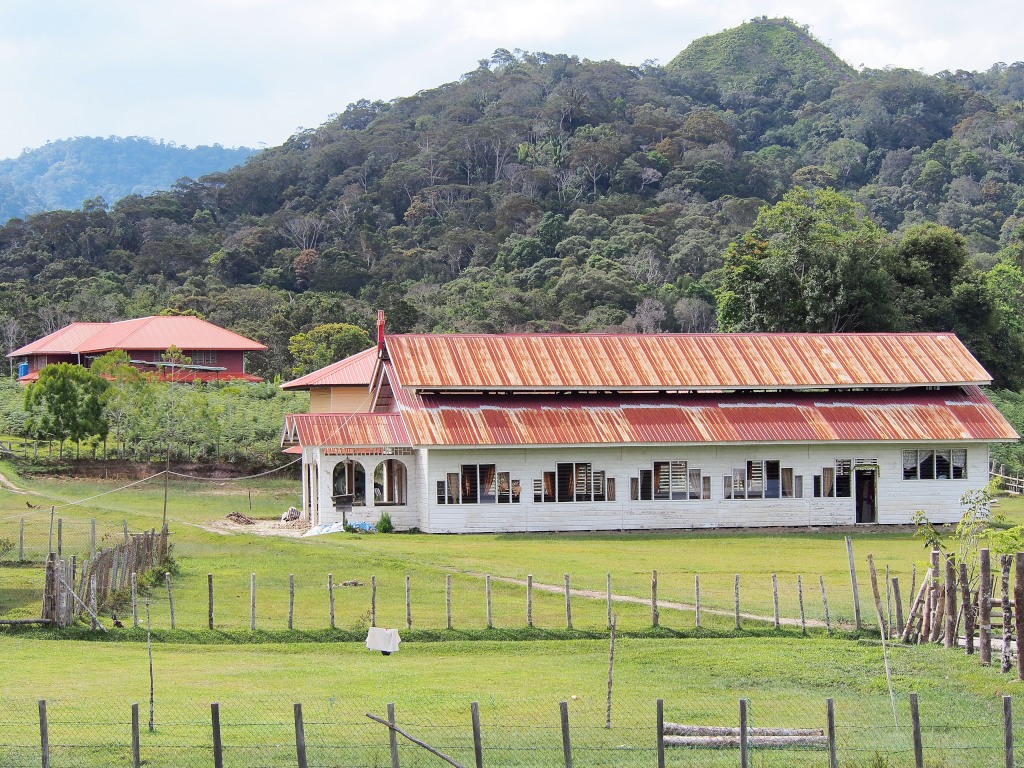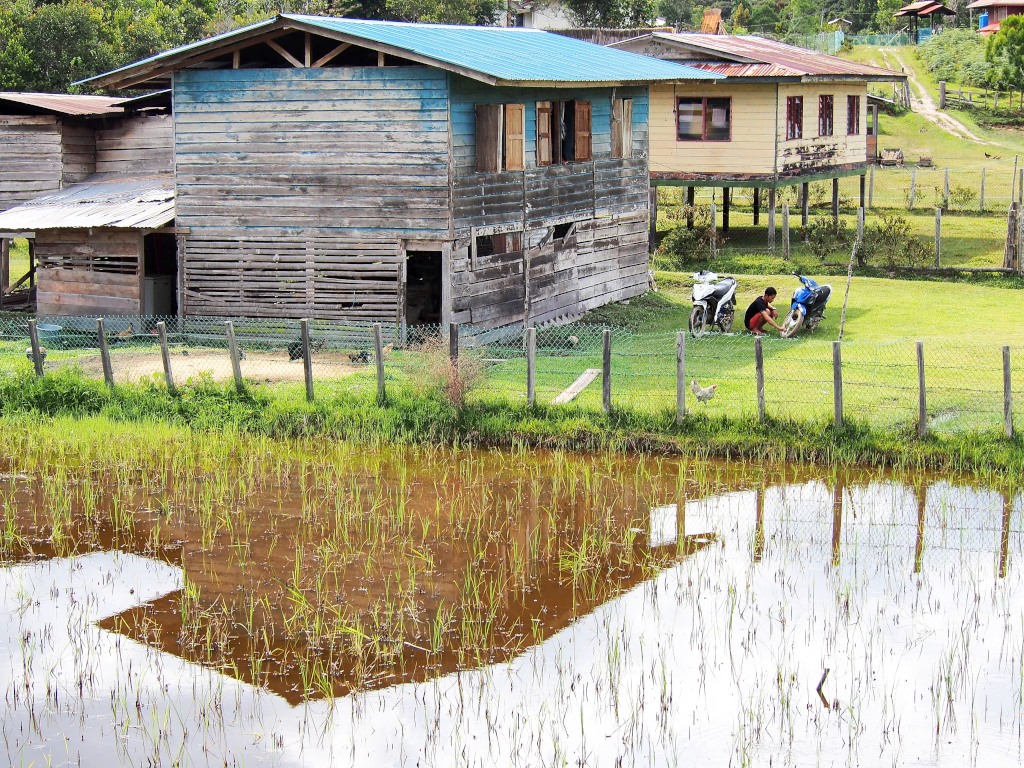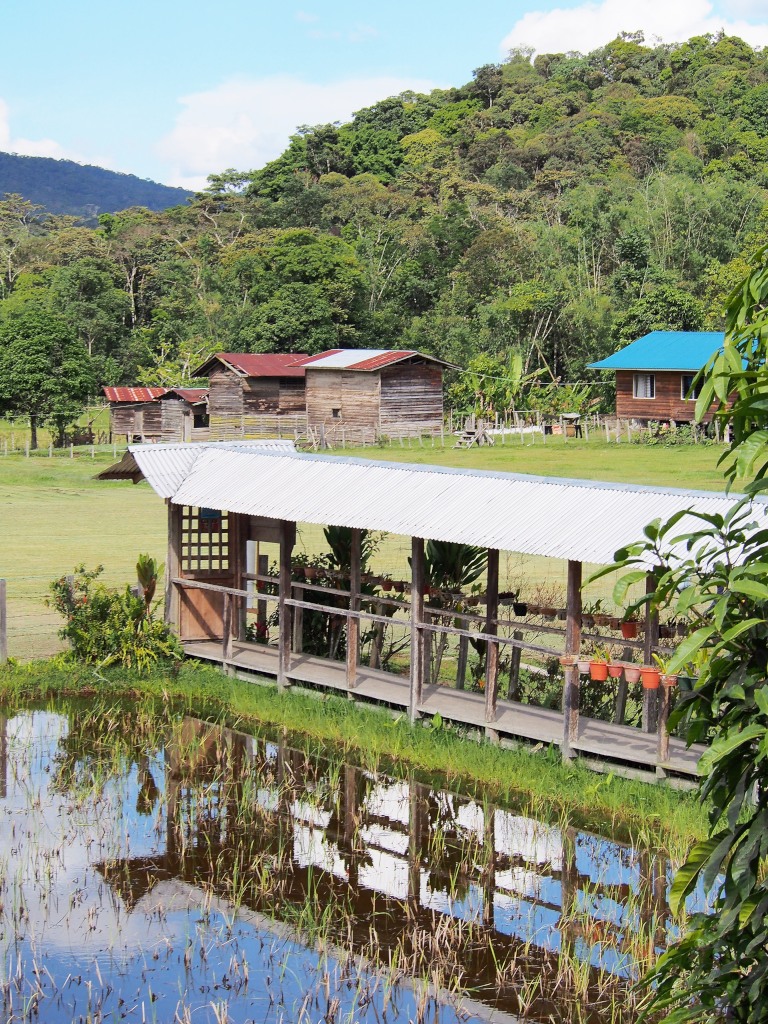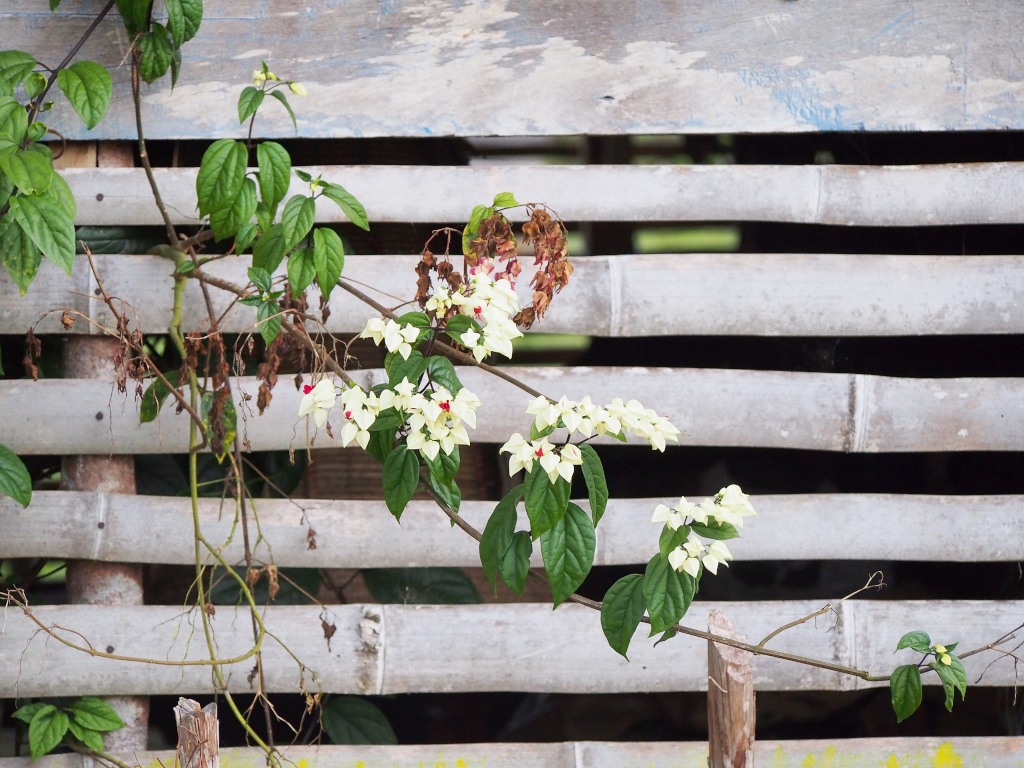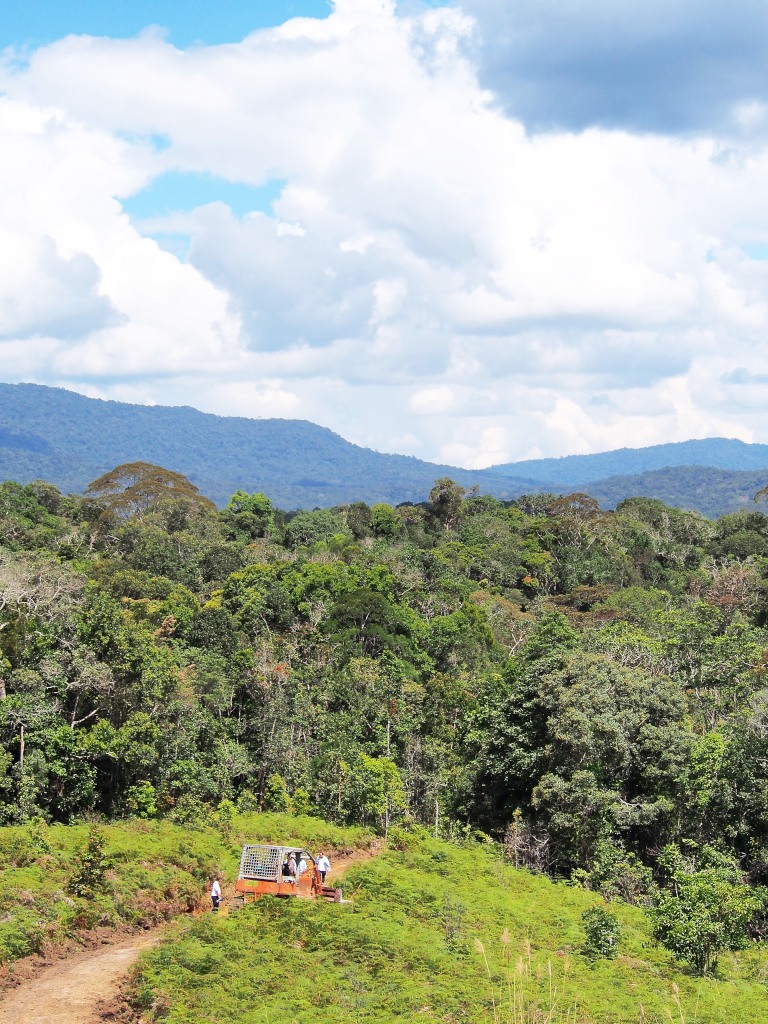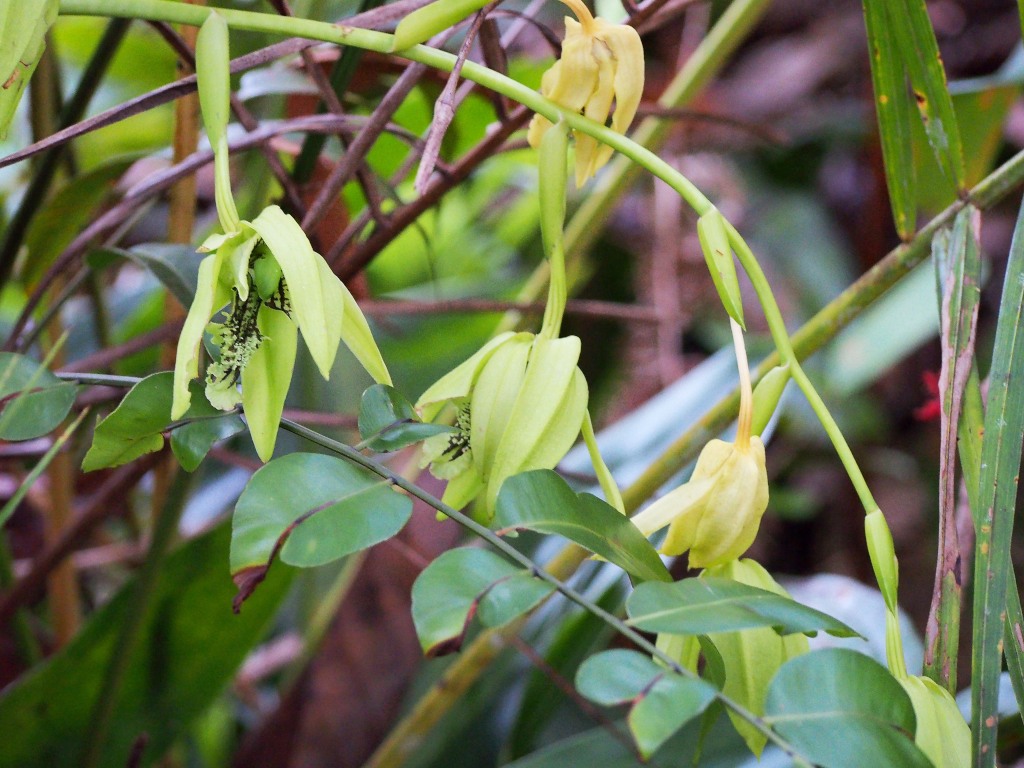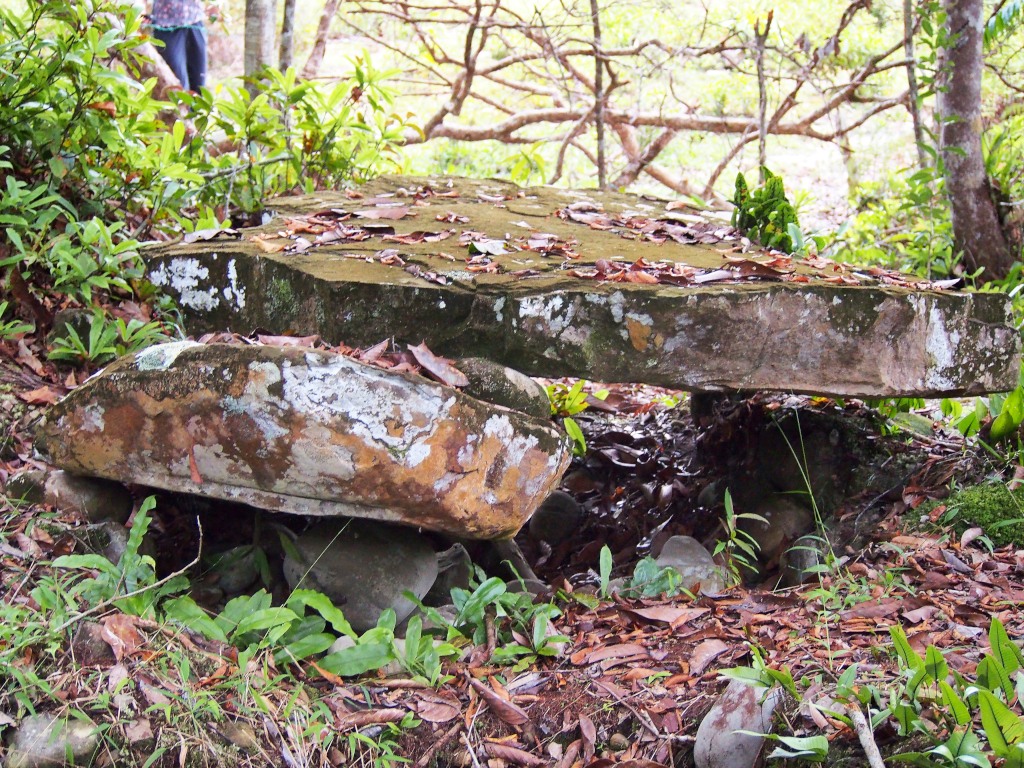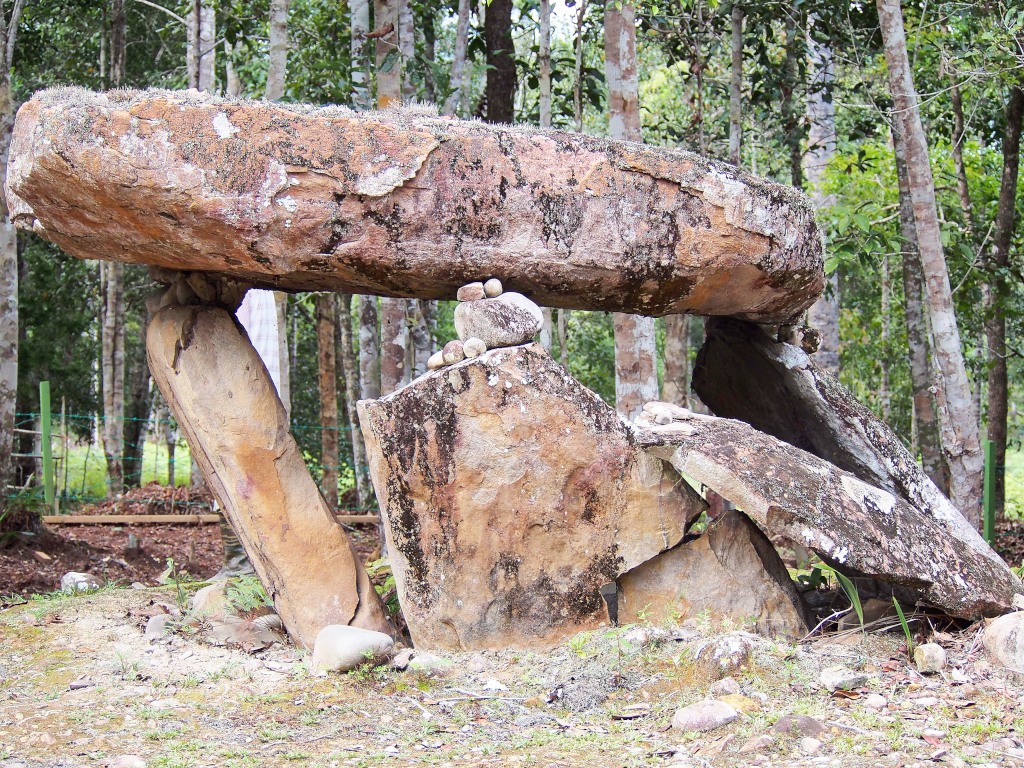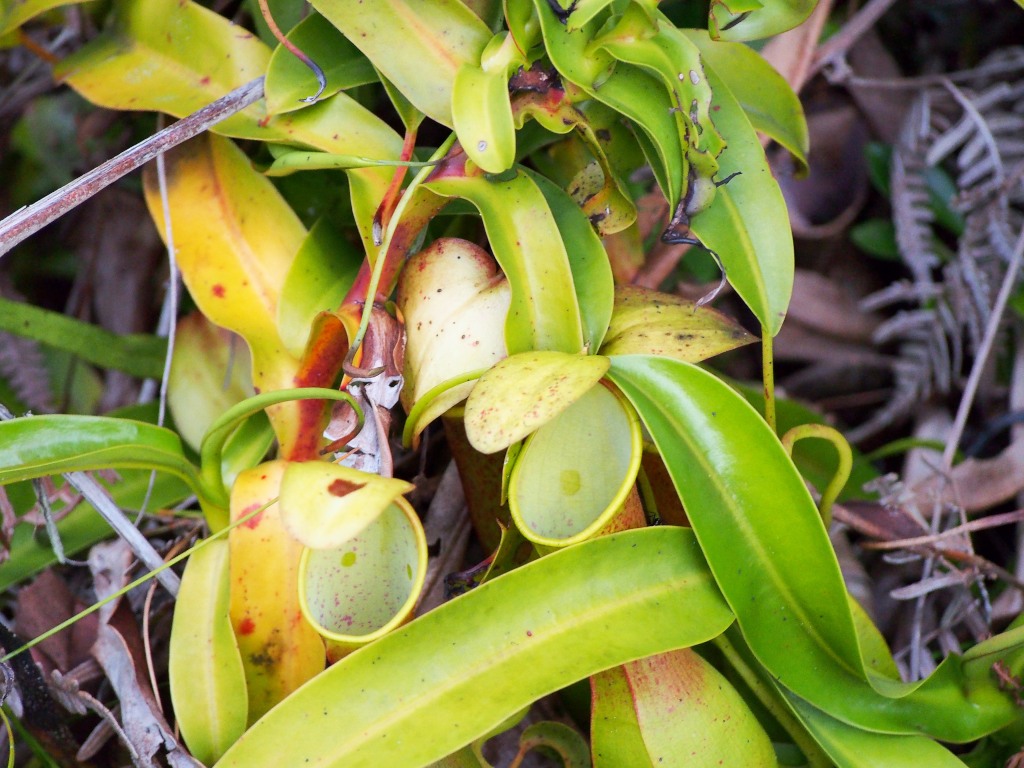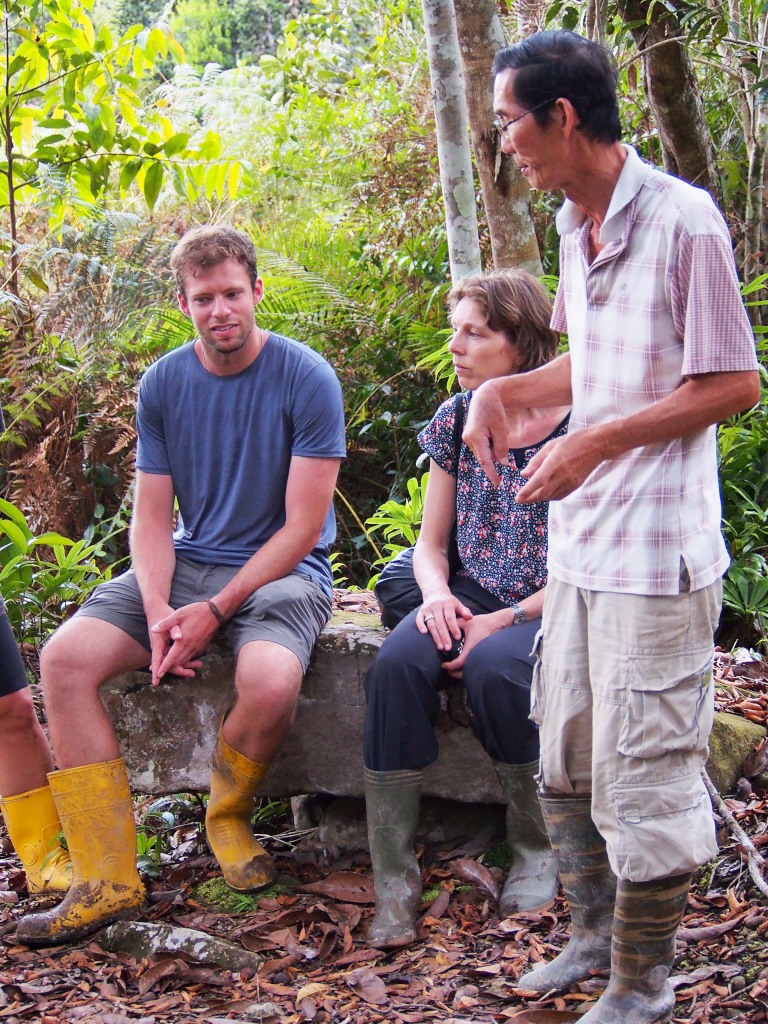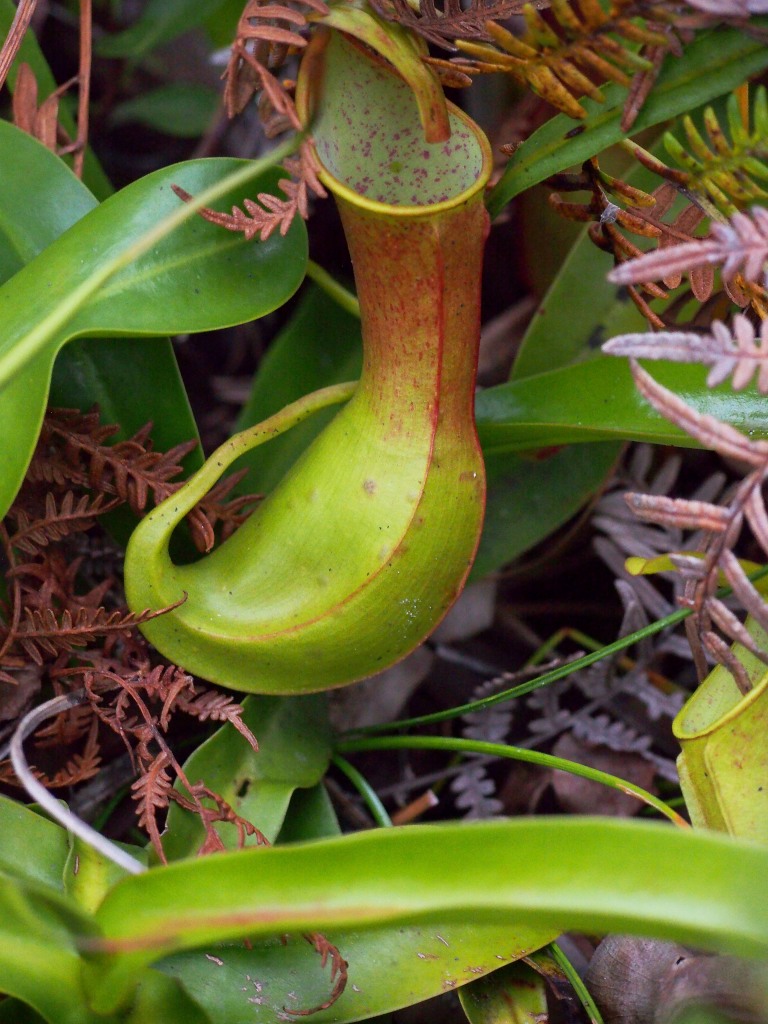May 12th, 2015
I wake up early enough to reach the 9:30 am meeting at the JungleBluesResort. In fact, I need not even leave on my own for the homestay, since Rudy is coming to the Bario Asal Lembaa longhouse and joining in the hike to Pa’ Lungan today. Rudy is here for the ultra-marathon taking place next weekend, for which the young visitors from west Malaysia will be volunteering.
Sina Rang prepares a modest breakfast and a far more generous pack lunch of rice stuffed in banana leaf, omelet as well as several bottles of water, weighing down my already heavy daypack considerably.
At least I am doing something constructive with my time in the Kelabit, rather than just moping around the longhouse. And the weather is just fabulous this morning, the bright blue sky amended with the thick billowing stacks of cumulus. The lengthy cotton leech socks are comfortably draped over my lower legs, waiting to perform their magic.
It seems the hikers at the JungleBluesResort are not quite ready, the Belgian and American from Minnesota nowhere to be seen. We loiter around the landing, and when the entire group finally appears, we are off on Stephen’s Land Cruiser, but first to the airport, where the Belgian needs to buy a plane ticket. Just as we have left, Stephen realizes that the flight from Miri is arriving imminently with the Dutch couple that was supposed to have come yesterday – and that also wanted to go on the trip to Pa’ Lungan.
So we head back, meet the couple at the airport still exhausted from their trek to the Pinnacles at Gunung Mulu National Park, but very motivated to see more of the Kelabit. They rearrange their affairs on the parking lot and we are off again, but still not to the trailhead, as Stephen needs to drop off bags from some of the guests at other homestays as he only has four rooms, and is fully booked with ultramarathoners here for the weekend’s marathon.
One of the posters on the notice board at the airport describes a culture and gastronomy festival that will be running through July and August. I would love to attend this festival, but will have returned home beforehand.
It seems that each of the homestays has their individual character. Sina Rang’s homestay is comfortable and not particularly expensive, while the Labang and de Plateau homestays are situated on sprawling and relatively well tended plots of land, close to the trailheads. I feel almost at loss at this variety of accommodation options and the concomitant different ways of experiencing Bario, but perhaps I could capitalize on these options on some theoretical subsequent visit to the region.
The Bario Asal Lembaa was the first longhouse in Bario, which was heavily augmented with settlers moved from the border areas as a result of the 1964 Konfrontasi with Indonesia, resulting from President Sukarno’s resentment at Sarawak and Sabah joining forces with Malaysia.
We disembark from Stephen’s Land Cruiser at the far end of the village as scenic in its own way as the end that I am staying in. Stephen peers at us ambivalently as we doff our daypacks, his Danish wife beaming, a few low-key jokes in tow, and then we are off along the country road, surrounded by the wall of jungle rising up around us, the leech socks wrapped firmly around my lower legs.
The undulating dirt road is hardly much of a challenge, although the Belgian and American end up heading the group, the rest of us straggling leisurely to the back, in my case simply because I can’t resist taking photos of every cloud formation rearing above the horizon. Best of all, the temperature is not outlandishly hot. I could definitely enjoy an elevation even 500 metres higher than this …
From the clearly defined dirt road we migrate into what could almost be described as a country path set amidst the dense but far from overwhelmingly subtropical forest, occasional stunning vistas of the staggered contours of distant hillsides outlined in darkening shades of green appearing, the vast ceramic cumulus billowing into the cerulean sky.
The path meanders, but is always clearly defined. Much to the consternation of Kristel, we are not following the directions of Stephen’s hand-drawn maps that everyone with the exception of myself made a point of logging photographically.
We proceed quite some distance along a segment in the trail until reaching a paddy seemingly in the middle of nowhere, the older women working in the field assuring us that we are definitely on the wrong trail, and that we should have forked to the right earlier on. So now the tables are turned, myself and the Dutch couple heading the pack, the long distance runners too discouraged to want to invest any energy in catching up at the back.
While the initial segment of the hike is easy enough, we soon wade into muddier terrain, the messier sections bridged to some extent with broken and decaying planks and slender logs, a single misstep resulting in potentially sliding into a morass of mud.
My boots appear to be the dirtiest of all of ours. What matters more is the possibility of getting leeches, which of course no one would know about unless we stripped down and checked our bodies.
The heat builds and the sense of comfort diminishes, but as long as no one slides in the mud and falls, we are fine. I think that most of the hikers are on the fit side, although after having gone on at length to the congenial Malaysian from Kuala Lumpur about the terrible shape I am in, I easily leave most of the group behind.
I have no idea how they will be able to run through these messy muddy sections during the marathon without either getting covered by mud or skidding and falling in one of the more difficult sections. The runners hardly seem to be perturbed, although sadly I won’t be around to witness how well or badly they do.
Our hike seems to have been going according to plan until we reach the main road, Kristel regularly checking her electronic map image to verify that we are on the right track. Apparently, there is some turnoff we should have branched to the left on but missed, and so now we are stuck on the muddy main road, rising and falling, weaving in serpentines through the thick forest, our frustration growing at the fact that we just seem to be wasting an inordinate amount of time, and there is no evidence of any settlement anywhere, never mind Pa’ Lungan.
Even worse, there is no one we can ask. Nothing but forest all around us, lining the red earth of the dirt road, hills rearing up against the horizon, the incredible cloud formations reaching far into the brilliant blue sky, and no one except us on the road.
I am getting tired – in fact, we are probably all tired, and see no end in sight. This new road should in theory be heading to Pa’ Lungan – or is it? Even if it is, how far does it deviate from the path we should have taken?
At a junction in the middle of nowhere, albeit offering some very spectacular views of the surrounding countryside, we are approached by several Toyota Land Cruisers full of men working on a project to bring solar energy to Pa’ Lungan. They confirm that we should take the upper old road to the village, since the road we had been on will dead end.
Only half an hour more, we are told, but in that short span of time the road degenerates into a steep, muddy skating rink, our shoes now horribly caked, one larger clump gluing onto the prior.
An expedition of men from the trucks accompanies us to a section of the road obstructed by felled trees. The sound of chainsaws attacking the slender giants grows, loud creaking rebounding through the forest upon each tree’s imminent demise.
We clamber over and under the logs splayed over the road, fearful of the potential impact of a tree overhead. Our next threat is the backhoe heading towards us from the opposite side of the road, the operator deftly swinging one log from the road after the other. We want to keep walking and pass by his snorting leviathan, but his enthusiasm at the controls makes no sign of abating.
He does relent, however, and beyond the ministrations of the backhoe, the jungle drops below us as we rise up another hill closer to the blue and white drama etched against the sky above us, and then down, spiralling gradually downward to a rickety bamboo bridge, and the utterly picturesque town of Pa’Lungan, with its broad cropped lawn and copses of trees romantically clustered around shallow ponds, series of roofs lined in tidy rows. Further on, an image of rural European rectitude, not something I would have expected in the midst of the jungles of Borneo.
Alex and Kristel already have booked their stay with the Sina Ritung guesthouse, but there are also other options in town. On one hand, we should give the other players in this remote village some business, but it would also be a good idea for us to stick together, particularly since we are apparently all intending on coming back to Bario tomorrow.
The elderly owners of the guesthouse take us in with their charms; he tall, slender, slightly hunched, pensive, haltingly articulating his relatively elaborate thoughts, while she is slightly more diminutive and gracious, her eloquence focused less on the dissemination of information than the expression of the generosity of her spirit.
As hospitable and welcoming as the Malay people may be, the modern day indigenous peoples of Sarawak’s interior represent an entirely rejuvenated concept of warmth and kindness. There is ample space at the Sina Ritung guesthouse, numerous rooms with multiple beds upstairs, a broad kitchen and dining area downstairs, a confined bathroom and shower space, and somewhere probably also their personal living quarters.
The structure and embellishment of the house is basic but evokes a warming degree of comfort, a continuation of that magnificent sense of intimacy I remember from traveling in rural Indonesia, most recently Sulawesi.
Our day is technically done, but it is difficult to restrain my enthusiasm at talking with Kristel and Alex, somewhat shy but ultimately very warm, one from Rotterdam and the other from den Haag, his English seemingly a touch faltering but consistently incredibly funny.
Not only did I find the most comfortable-looking of the rooms (after a few momentary glances into the rooms), but the vistas into the countryside around beyond the town are just spectacular. It is simply hard to imagine that such an lovely place exists on the planet, not that the forests aren’t replete with every manner of nasty poisonous insect and snake – not to mention leeches.
The owner has scheduled a hike to the local megaliths later this afternoon, which we will undertake in pairs of gumboots set aside for the occasion. My leech socks are still strapped onto my legs and are not about to come off, what with the prospect of brushing against wet bushes along the trails ranging away from town, replete with mud and soggy grasses.
The bushes around us are laden with the clusters of red floral bells. The man’s dog chases back and forth erratically and impatiently, our excursion clearly the excitement of his day. The megaliths are close to town and otherworldly, again nothing that would be expected in this neck of Borneo, although they may be nowhere near the ages of the sites in Europe whose image they evoke.
He articulates lengthy explanations as to the presumed provenance and the stories that have arisen over time concerning these structures. He concludes our walk by pointing us to a spot where rare and delicate pitcher plants grow, almost innocuous in the scrub lining the path.
Photos in hand, we return to the guesthouse to end the day over a sumptuous banquet prepared by his wife, the plates and carefully arranged before us with elliptical ceramic plates angled at even intervals along the centre of the rectangular table.
Much of the food has been foraged from the euphemistically-named jungle supermarket, stewed tapioca leaves, Bario white rice, savory stewed forest mushrooms, midin (edible ferns) amended with torch ginger, rich stewed roasted wild boar, ended with the delicate and sweet Kelabit pineapple spears and very fine rice wine we are served in individual shot glasses.

